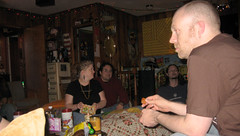Modern Day Tarot Card Reading is Fascinating
Tarot cards consist of twenty-one trump cards, the fool and extra face card for every suit. Several parts of Europe use the deck to play games, but this is less popular in English countries where the deck is commonly used for divination.
Tarot cards find their history back in the dawn of cards in the 14th century. Speculation denotes that they were founded in Islamic countries, but the first historical news of them is their banning in the dominantly Christian area of Bern, Switzerland. Early tarot decks, however, featured only sixteen trump cards, as compared to the twenty-one that are featured in modern decks.
The modern tarot deck is separated into what is commonly called the major arcana or trump cards and minor arcane or suits of cards. The trump cards or major arcana consist of twenty two cards, all without suits. These include the Fool, the Magician, the Empress, Justice, the Wheel of Fortune and others. The minor arcana consists of four suits of cards; swords, staves, cups and coins. Today, staves are often called wands, but rods or batons are seen as well. Coins may be called disks or pentacles in some tarot decks.
Every card has a different meaning, depending upon what the card’s suit is, and if it is part of the Minor or Major Arcana. All of the Tarot cards are numbered, so each card serves a reader with a specific numerological value which can be interpreted during divination practices. Furthermore, the meanings of the cards evolve depending upon where the cards appear in a reading, as well as what kind of card layout is used. The cards are read both singularly and together to get a complete reading. The most popular layouts are the three card spread and the
